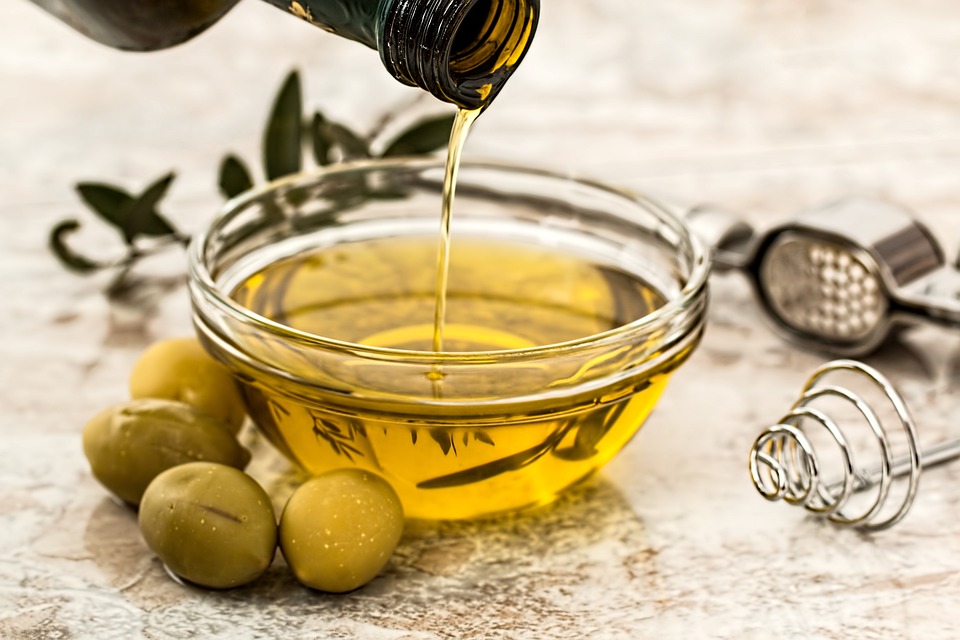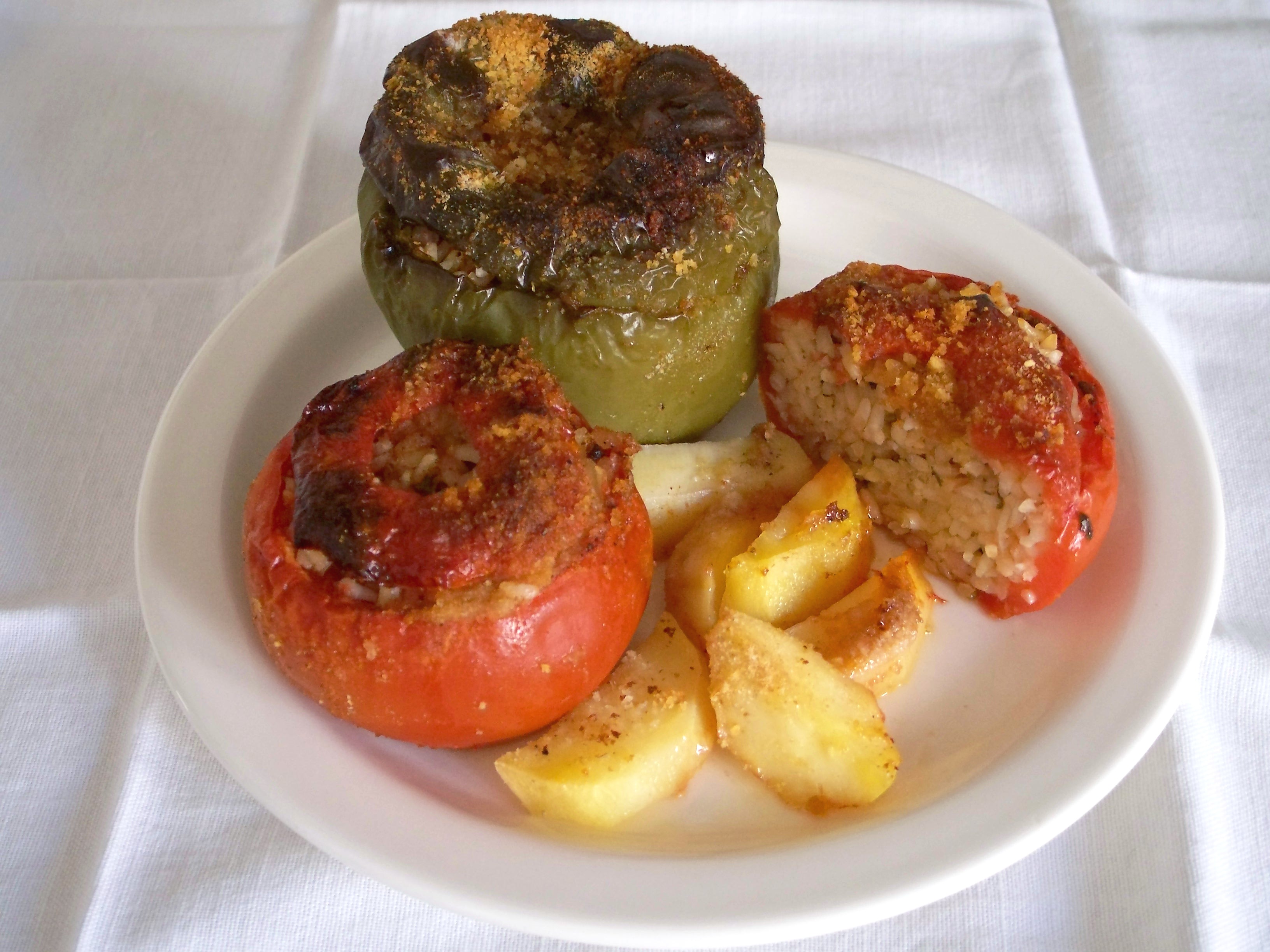
Finding the right words to describe Greek cuisine is almost impossible. You just need to taste it for yourself—we’re sure that you’ll be amazed! In this article, we’ll help you find your own words to describe iconic Greek dishes and unique Greek food items.
All traditional Greek foods are based on the Mediterranean diet, usually containing fresh vegetables, pasta, cheese, and extra virgin olive oil. Greek foods are full of flavor since they often include onion, garlic, and a variety of herbs and spices. Although Greek cuisine is not spicy, its rich taste will certainly surprise you.
Of course, there are many unique vocabulary words associated with Greek cuisine, so keep reading if you want to know exactly what to order (and how to order it) during your next visit.
 Table of Contents
Table of Contents
- Must-Try Traditional Greek Dishes
- Unique Greek Products
- Authentic Greek Gyros vs. Overseas Gyros
- Food-Related Vocabulary
- Simple Recipes to Make Authentic Greek Food at Home
- Conclusion
1. Must-Try Traditional Greek Dishes
Imagine that you’re at a traditional Greek taverna, browsing through a handwritten menu made with love. These are some of the most popular Greek dishes you should definitely try!
- Greek: μουσακάς (ο)
- Romanization: musakás
- Ingredients: eggplant, potato, ground meat, béchamel
When fresh eggplants and potatoes meet frizzled, fatless ground beef with spices, something magical happens. Add a smooth béchamel sauce, sprinkle with grated cheese, and…perfection!
This dish consists of thin layers of fried eggplants and potatoes, which are placed inside a deep tray. Then, a ground beef sauce is poured on top in order to gently cover all empty spots. Last, but not least, a béchamel sauce is added and grated cheese is sprinkled on before the tray goes into the oven. There it will stay until the top turns golden brown.
The result is a real treat for your taste buds!
- Greek: παστίτσιο (το)
- Romanization: pastítsio
- Ingredients: bucatini pasta, grounded graviera cheese, ground meat, tomato sauce, béchamel
This dish might seem very similar to μουσακάς, but it’s a whole different world of deliciousness. In this case, layers of pasta replace the eggplant and potato. The top is filled with béchamel and the tray finally goes in the oven.
Greek: φασολάδα (η)
Romanization: fasoláda
Ingredients: white beans, carrots, tomatoes, celery, onion
Φασολάδα is a rich and highly nutritious soup, containing local white beans and fresh vegetables. When boiled to perfection, the beans are soft and add a unique thickness to the soup. Φασολάδα is a staple of modern Greek cuisine, with many Greek families eating it quite often (especially religious families during the Great Lent).
Photo by Badseed, under CC BY-SA 3.0
- Greek: γεμιστά (τα)
- Romanization: yemistá
- Ingredients: glutinous rice, tomatoes, bell peppers, herbs, onion, minced meat (optional)
The word γεμιστά actually means “stuffed.” This traditional Greek dish consists of stuffed tomatoes, peppers, and sometimes even zucchini, which are stuffed with rice, herbs, and (optionally) minced meat. The stuffed vegetables are baked in the oven and are often served with oven-baked potatoes.
- Greek: στιφάδο (το)
- Romanization: stifádo
- Ingredients: rabbit meat, pearl onions, tomatoes, red wine, cinnamon
This dish is really special. Rabbit and glazed, sweet little pearl onions will surely surprise your mouth. All of this is in a thin tomato sauce which covers each precious bite. With its strong flavor, this dish will surely remind you of French cuisine.
2. Unique Greek Products
The ingredients of Greek cuisine play the most important role in a dish’s end result. Greece is blessed to produce some of the purest organic vegetables, olive oils, and of course the most exclusive Greek product: feta cheese!
Let’s take a closer look…

- Greek: ελαιόλαδο
- Romanization: eleólado
- Translation: “olive oil”
Greek olive oil is praised worldwide and many producers have won several international competitions for the taste and purity of their olive oil. It’s not a coincidence that Ancient Greeks used to massage their body and hair with olive oil, which was used as a natural remedy for the skin.

- Greek: ελιά
- Romanization: eliá
- Translation: “olive”
An exquisite oil is always produced from high-quality raw materials. Greek olive oil comes from some of the most tasteful olives in the Mediterranean.
In fact, the olive tree was considered sacred in Ancient Greece. According to the local mythology, a contest between Athena and Poseidon to determine who would become Athens’ protector, resulted in the creation of the first olive tree.
Moreover, an olive wreath was the prize of the Ancient Greek Olympic Games. The winner wore this wreath on their head, enjoying one of the most prestigious moments of their life.

- Greek: φέτα
- Romanization: féta
- Translation: “feta cheese”
Feta cheese is a semi-soft (or semi-hard) white cheese soaked in brine. In 2002, the European Commission recognized φέτα as a protected designation of origin product. Thus, nowadays, you may find authentic Greek feta only in the European market.
This cheese works wonders in salads, although it’s often offered as an appetizer. In some places of Greece, it may also be fried and served with local honey. If you want a taste of Greek cuisine and have the chance to try this, don’t miss it!

- Greek: ούζο
- Romanization: úzo
- Translation: “ouzo” traditional drink with alcohol
Ούζο is one of the most iconic alcoholic Greek drinks. It’s an aromatic, anise-flavored apéritif which is perfectly paired with seafood and small Greek appetizers called μεζέδες (mezédes), or “mezze.” It’s usually served with ice, and many locals dilute it with some water due to its strong taste and alcohol content.
3. Authentic Greek Gyros vs. Overseas Gyros

- Greek: γύρος
- Romanization: yíros
- Translation: “Greek gyros” dish
Gyros is often thought to be Greece’s national dish!
In reality, gyros is only the most popular Greek fast-food item. The national dish of Greece is the white bean soup that we saw above. Gyros is either served on a plate or within a warm pita bread, along with onion, tomato, fried potatoes, and tzatziki sauce.
In various countries abroad, many Greek restaurants offer gyros. However, more often than not, its flavor differs from that of the gyros in Greece. Originally, it’s made of thinly sliced or shaved pork or chicken meat that has been roasting in a vertical rotisserie—a roasting style that’s not very common outside of Greece. The meat quality, cut of meat, and seasoning also play important roles in giving Greek gyros its distinct taste and texture.
4. Food-Related Vocabulary
Here are some useful vocabulary words and phrases to help you describe your experience with Greek food:
- Greek: μαγειρεύω
- Romanization: mayirévo
- Translation: “to cook”
- Greek: ελληνική κουζίνα
- Romanization: elinikí kuzína
- Translation: “Greek cuisine”
- Greek: αλμυρό
- Romanization: almiró
- Translation: “savory” / “salty”
- Greek: γλυκό (το) / γλυκό
- Romanization: glikó
- Translation: “dessert” / “sweet”
- Greek: Θα ήθελα μια χωριάτικη σαλάτα, παρακαλώ.
- Romanization: Tha íthela mia horiátiki saláta, parakaló.
- Translation: “I would like a Greek salad, please.”
- Greek: Η μπριζόλα συνοδεύεται από ρύζι ή από πατάτες;
- Romanization: I brizóla sinodévete apó rízi í apó patátes?
- Translation: “Does the steak come with rice or french fries?”
Do you want to expand your vocabulary a bit more?
We‘ve got you covered with our food-related vocab lists:
5. Simple Recipes to Make Authentic Greek Food at Home
You don’t need to be a chef to enjoy Greek food!
Organize a Greek-themed night at home, ideally with a good Greek movie. Below, we’ll show you how to make Greek food at home! We’ve chosen two extra-simple yet tasty authentic Greek dishes we’re sure you’ll love.
Photo by Nikodem Nijaki, under CC BY-SA 3.0
- Greek: τζατζίκι
- Romanization: tzatzíki
- Ingredients: 2 medium cloves of garlic, 300g Greek yogurt, 1 cucumber, 2 tbsp olive oil, 2 tbsp vinegar or lemon juice, dill, salt, pepper
- Recipe: Chop and smash the two cloves of garlic in a mortar. Grate the cucumber and add 1 tbsp of vinegar and some salt. Squeeze the cucumber with paper towels to drain its juices. Doing this ensures that the tzatziki won’t be too watery. In a bowl, add the Greek yogurt, the grated and drained cucumber, some freshly chopped dill, olive oil, a tbsp of vinegar, and some salt and pepper.
- Bonus Tip: Serve it with french fries or pita bread, and you won’t regret it!

- Greek: χωριάτικη σαλάτα
- Romanization: horiátiki saláta
- Translation: rustic salad (also known as Greek salad)
- Ingredients: 1 tomato, 1 red onion, 1 cucumber, 1 green pepper, 100g feta cheese, salt, pepper, oregano, olive oil
- Recipe: Cut the vegetables into medium-sized pieces, according to your preferences. Season with a lot of olive oil, salt, pepper, and oregano. Add some cubes (or even a slice) of feta cheese on top.
6. Conclusion
I don’t know about you, but writing this article has made my mouth water!
Or, as we say in Greek:
- Greek: Μου τρέχουν τα σάλια!
- Romanization: Mu tréhun ta sália!
- Translation: “I’m drooling!” (Literally: “My saliva is running!”)
Of course, Greek cuisine is vast and we couldn’t possibly include everything. That said, we really tried to give you a well-rounded “taste.”
Start learning Greek today in a consistent and organized manner by creating a free lifetime account on GreekPod101.com. Tons of free vocabulary lists, YouTube videos, and grammar tips are waiting to be discovered.
In the meantime, have you tried any of these dishes? What’s your favorite Greek food?
Let us know in the comments below!















